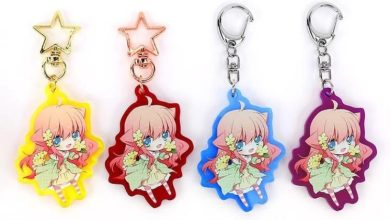Best Practices for Organizing Your Inventory with Product Catalog Management

Nowadays, we all know that keeping tabs on inventories is important especially when you are running a successful business. A well-organized product catalog management can do wonders for
- Sales,
- Customer happiness,
- and Operational efficiency
Read on as we take a look at some time-tested approaches to inventory management with product catalog management.
Table of Contents
Product Catalog Management and Its Critical Role
Guidelines for an Effective Product Catalog Management
In summary
Product Catalog Management and Its Critical Role
An exhaustive list of products is the bedrock of any reliable system for managing inventories. Everything you sell is included on the list, including the
- Item’s description,
- Price,
- and Availability
An essential part of managing your product catalog management effectively is keeping your inventory with the following to your employees and consumers;
- Accurate,
- Up-to-date,
- and Readily available
The importance of product catalog management may be summarized by the following points:
- Accuracy in Tracking Inventory: A well-kept product catalog management allows for precise inventory tracking. You may save time and money by doing this instead of worrying about running out of stock or having too much.
- Order Processing Made Easy: Finding what customers want, packing their orders, and sending them off is a breeze with a well-organized product catalog management. Orders are processed more quickly and customers are happier as a consequence.
- Efficient reporting process: For easier reporting on product performance, stock levels, and sales, a product catalog management may be a useful inventory management tool. By keeping these ideas in mind, you will be able to guide your organization towards success.
Guidelines for an Effective Product Catalog Management
With that out of the way, let’s have a look at some tried-and-true methods for managing your product catalog:
1. Sort Items by Type
Sort your items into sensible categories first. Any applicable criterion, such as product kind or brand, might serve as the basis for this. Putting your items into the right categories makes it easy to find what you need in your catalog. It also makes it easier for customers to find in-store or online products.
2. Name Products Using Detailed Descriptions
Name your products in a way that describes them. If you value clarity and want to avoid confusing your clients or employees, avoid using general phrases or acronyms. Having a name that describes the product immediately makes it easier to find and identify.
3. Give distinct product identifiers
Give every item in your catalog a unique code or number. When you have a lot of goods, this helps with proper tracking. Product IDs that are unique and easy to remember help with order administration and keep comparable items from being mixed up.
4. Give Comprehensive Product Details
Ensure every product in your catalog has an accurate and thorough description. Specifications like size, material, characteristics, and any other pertinent information should be included in here. There will be fewer returns or complaints if consumers can access thorough product descriptions.
5. Establish Explicit Prices and Availability
Be sure to include every product’s current price and stock status in your catalog. If there is a change in price or quantity available, update this information. Customers are more likely to trust a business that is upfront about pricing and availability information and less likely to be surprised when they check out.
6. Make Use of Product Properties
You may learn more about your items by looking at their qualities. Any pertinent details, such as color, size, and weight, might be included here. Customers may enhance their purchasing experience by using product features to filter and search for goods that meet their unique criteria.
7. Set Up a Centralized Mechanism
Use a centralized platform or program to ensure that no product is lost or misplaced. Doing so will ensure that everyone on the team has access to the most recent information. You can manage and update your catalog much more easily and with less chance of mistakes or inconsistencies if everything is in one place.
8. Keeping Your Catalog Up-to-Date and Audited
Make sure your product catalog management is accurate and up-to-date by auditing it regularly. Take out what is not needed anymore and put new stuff in as it comes. The most effective method of inventory management is to maintain an up-to-date catalog. This will ensure that clients do not buy products that are out of stock.
In summary
Any company serious about efficiency and customer satisfaction needs product catalog management software. Essential components of an efficient product catalog management system include product categorization, descriptive name usage, unique identifier assignment, thorough description provision, and transparent price and availability settings.
A centralized system, frequent audits and updates to your catalog, and product characteristics all help simplify inventory management. Successful businesses maximize their inventory management by applying these best practices and by seeking for expert help from Amazon Listing Services. Visit our website today and let’s get started!





